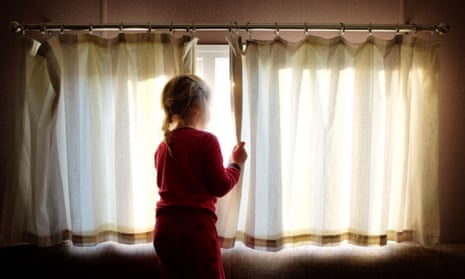The number of children in care in England is at a 10-year high: there were 78,150 at the last count. How they are looked after and educated should be a matter of general public concern. There are few more serious responsibilities for a government than that of corporate parent – particularly when such an arrangement is reached because a child or young person is particularly vulnerable, or has previously been let down.
Yet the mounting pile of evidence that the system is flawed has just increased again, with the addition of the criticisms of aspects of the children’s social care sector contained in Ofsted’s annual report. Problems with England’s 14 secure children’s homes, unlicensed “semi-independent” provision for over-16s, and three secure training centres for young offenders, must urgently be addressed.
But ministers should look beyond the specific failures regarding particular institutions or age groups. A review of the care system was promised in the Conservatives’ manifesto. This should start as soon as possible, be fully independent, and have a remit encompassing all the children and young people in the care of the state – including the awkward details of their exit from this care into adulthood. Simplistic answers such as increasing the number of adoptions must be given up for good. The impact of poverty caused by benefit cuts on vulnerable families must not be ducked.
The problem of adult social care – both how to provide it and how to fund it – is widely recognised as a key public policy issue, even if politicians have yet to come up with a solution. England’s 151 local authorities are likely to be just as exercised by the challenge of providing for children. While budgets face further cuts, demand for services that they are statutorily obliged to offer keeps rising, with an £800,000 overspend last year. There were 3,000 more over-16s in care in 2019 than four years earlier. In a recent survey, 64% of councils reported that the number of cases or complexity of need had increased “to a great extent” over the same period.
Almost three-quarters of looked-after children live with foster carers, and 92% of agencies are rated good or outstanding by Ofsted. The number of local authorities rated inadequate has fallen from 22% to 12%. The situation, according to the inspectorate, is improving. But as well as specific problems such as the unacceptable use of “pain-inducing techniques” on young offenders, and the high turnover and low qualifications of children’s home workers, the bigger picture needs a hard look.
The dysfunctional market for residential care would be high on any list of concerns. It is morally wrong, and demeaning, for profits to be made out of the provision of a home life to vulnerable children. But principle aside (and changing the law in this area cannot be done in a hurry), the market has failed, producing profits for private-equity investors and poor and often damaging experiences for children.
Belatedly, awareness is growing of how moving children many miles from the people and areas they know can make them susceptible to criminal exploitation. A coherent strategy must take on board such unintended consequences of cost-cutting, and recognise the appallingly high price of failure – both in human and financial terms. It must also be realistic, with the “overoptimism” of professionals highlighted by Ofsted as a weakness, as well as a lack of national leadership. This is surely related to the number of Whitehall departments involved: not just education but health, justice and communities. Finding a way to work across government to improve the experiences and life chances of these children is the least we owe them.
